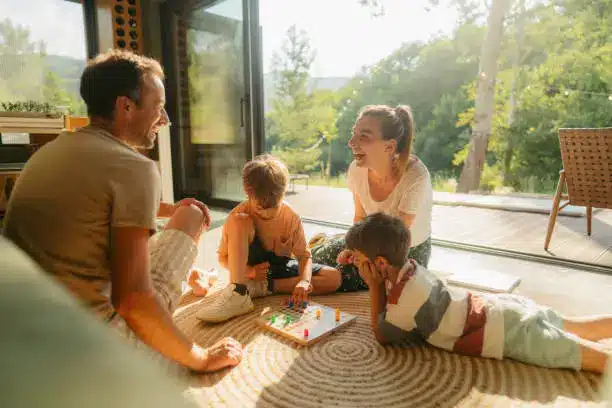🙋♂️ Today, we’re going to dive into the concept of a zero-waste apartment clear-out. But it’s more than just a spring clean or a ruthless declutter. We’re talking about a thoughtful, eco-friendly approach to ridding your space of unwanted items, without adding to the planet’s waste problem.

Imagine this: A living space that breathes. Items that bring you joy and function. Minimal landfill contribution. Sounds good, doesn’t it? 🌿💚 And while the process might seem daunting, our ultimate guide to hosting a zero-waste apartment clear-out can help you achieve just that.
Now, you might ask: “Why the emphasis on zero-waste?” Well, the answer is simple. Every year, we generate billions of tonnes of waste, much of which ends up in landfills or the ocean. This not only pollutes our environment but also uses up valuable resources. By reducing the waste we generate, especially during large clear-outs, we’re taking steps towards a greener, more sustainable future. And your apartment is the perfect place to start.
Ready to embark on your zero-waste journey? 🚀 In this guide, we’ll cover everything you need to know about hosting a successful clear-out. We’ll delve into the process of sorting through your possessions, disposing of items responsibly, and rehoming what you no longer need or want. We’ll also share tips on how to maintain your newly decluttered space and avoid falling back into old habits.
🔑 Key Takeaways
Before we start, here’s a quick look at what you can expect to learn from this guide:
- Understanding the concept of a zero-waste lifestyle and its importance in today’s world.
- Planning and executing a zero-waste clear-out, including sorting, disposing, and rehoming items.
- Keeping your apartment clutter-free in the long run and fostering sustainable habits.
Don’t worry if you’re a zero-waste beginner; we’ve got you covered. 💪 This guide is designed to be comprehensive and easy-to-follow, breaking down complex concepts into actionable steps. So whether you’re an experienced environmental warrior or just starting your green journey, there’s something here for everyone.
💼 Let’s Dive In!
Enough with the preamble, let’s dive right into it! Are you ready to transform your apartment and your lifestyle while making a positive impact on the environment? Join us as we journey through the ultimate guide to hosting a zero-waste apartment clear-out. 🌎
Remember, every little step counts. With patience, perseverance, and the right guidance, you can create a home that reflects your commitment to sustainability and your desire for a simpler, less cluttered life.
👣 Your Green Journey Begins Here
It’s time to roll up your sleeves and get ready to embrace a cleaner, greener way of living. As we delve into this guide, we hope you’ll find the inspiration and information you need to embark on your zero-waste journey. Let’s make your apartment clear-out the first of many sustainable actions. 💚🏡
Let the green and clean revolution begin!
Embracing the Green Lifestyle: Initial Steps towards a Zero-Waste Apartment Clear-Out
Ever considered how much waste you generate during a typical apartment clear-out? The plastic packaging, the non-recyclable materials, the sheer volume of items that end up in landfill? It’s a sobering thought. But fear not, there is a better, more eco-friendly way to carry out an apartment clear-out. Welcome to the concept of zero-waste. It might seem like an unattainable ideal, but with the right strategies and mindset, you can significantly reduce your waste footprint during your next apartment clear-out. 🌱
But where should you begin? The first step is understanding what zero-waste means. Essentially, it’s all about reducing, reusing, recycling, and composting, with the ultimate goal of sending nothing to the landfill. While this may seem like a Herculean task, every small action can contribute to a significant collective impact.
The key to a successful zero-waste apartment clear-out lies in effective planning and organization. This involves inventorying your items, determining what to keep, discard, donate, or sell, and exploring eco-friendly disposal options. The journey may be challenging, but the benefits to the planet, and your conscience, are worth it.
Strategies for a Zero-Waste Apartment Clear-Out
Now that we have established the fundamental principles of a zero-waste lifestyle let’s delve into specific strategies you can adopt for a green and clean apartment clear-out. The process can be broken down into three main stages: pre-clear-out, during the clear-out, and post-clear-out.
Pre-Clear-Out Stage
Before you begin the clear-out, create a master plan. Start by taking an inventory of your items, noting what you have, and assessing what you need and don’t need. This is an excellent opportunity to practice the zero-waste principle of reducing. Once you have a clear picture of your possessions, you can decide what to keep, what to donate or sell, and what to discard.
As you sort through your items, consider their life cycle. Are they durable, or will they end up in the landfill after a few uses? Can they be repurposed or upcycled? Are there eco-friendly alternatives available? These questions will guide your decision-making process, helping you to reduce waste.
During the Clear-Out Stage
As you embark on the clear-out, remember to uphold the zero-waste principles. Use reusable packing materials like cardboard boxes, cloth bags, or biodegradable packing peanuts. Avoid plastic packing materials as they contribute to environmental pollution.
For items in good condition that you no longer need, consider donating or selling them. Many charitable organizations accept used items, and online marketplaces like eBay or Craigslist can be used to sell items. If an item is broken or worn out, check if it can be recycled or composted. Always aim to divert waste away from the landfill.
Zero-Waste Disposal Options
Even with the best planning, some items may need to be discarded. But instead of throwing them in the trash, consider the following zero-waste disposal options:
- Composting: Organic waste like food scraps, coffee grounds, and yard waste can be composted at home or through a local composting service.
- Recycling: Many items, such as paper, glass, metal, and certain plastics, can be recycled. Ensure you’re familiar with your local recycling guidelines.
- Specialty recycling programs: Certain items, like electronics, batteries, and light bulbs, require special recycling processes. Look for specialty recycling programs in your area.
- Hazardous waste disposal: Items like paint, motor oil, and pesticides should be disposed of at a hazardous waste facility.
For a more visual guide on how to conduct a zero-waste clear-out, consider watching this informative YouTube video: “Zero Waste Home Tour” by Exploring Alternatives. It provides practical tips and insights into the zero-waste lifestyle.
Comparison of Traditional Clear-Out and Zero-Waste Clear-Out
Still unsure about adopting a zero-waste approach? Here’s a comparative table illustrating the significant differences between a traditional clear-out and a zero-waste clear-out.
| Traditional Clear-Out | Zero-Waste Clear-Out | |
|---|---|---|
| Packing materials | Plastic bags and bubble wrap | Cardboard boxes, cloth bags |
| Disposal method | Most items go to landfill | Items are donated, sold, recycled, or composted |
| Environmental impact | Contributes to pollution and climate change | Minimizes environmental harm |
As you can see, the benefits of a zero-waste clear-out far outweigh the traditional method. Not only does it minimize environmental harm, but it also encourages a mindful and sustainable approach to consumption. Ready to embark on this journey? Remember, every little step counts, and it’s never too late to start. Good luck on your zero-waste adventure! 🌍
Conclusion
In the preceding sections, we have delved into a diverse array of concepts and technicalities, each an integral part of the world of IT and engineering. Now, as we move towards the culmination of this discourse, let’s take a moment to retrace the important points and absorb their essence.
In the realm of software engineering, we began by discussing its foundational principles. We dissected the framework of Software Engineering 🧠, exploring how it paves the way for the creation of robust, efficient and user-friendly applications and systems. Alongside, we highlighted the role of various methodologies like Agile, Scrum and Waterfall in streamlining the development processes.
Thereafter, we plunged into the technicalities of IT infrastructure, where we examined the importance of various elements like servers, networks and storage. Here, we emphasised on the imperative of IT Infrastructure 🏗️ in building a digital ecosystem that is both resilient and responsive.
Delving further, we explored the intricacies of Cybersecurity, discussing its importance in the current digital age. We elaborated on the various threats that lurk in the cyber world and how robust security measures can mitigate these risks. Our focus on Cybersecurity 🛡️ underscored the need for continual vigilance and adaptation in the face of evolving threats.
Finally, we touched upon the future of IT and engineering, where AI, Machine Learning and Blockchain are poised to play pivotal roles. This foray into Future Technologies 🚀 ignited a discussion on the potential of these technologies to revolutionise the way we interact with the digital world.
The breadth and depth of IT and engineering are truly astounding. Each area we explored is a testament to the ingenuity and resourcefulness of human minds. Yet, it is crucial to remember that this is an ever-evolving field. New challenges and opportunities are always on the horizon. As professionals and enthusiasts, we must strive to stay abreast of these developments and continue to push the boundaries of our understanding.
So, whether you’re a seasoned professional, an aspiring student or simply someone intrigued by the world of IT and engineering, I hope this article has provided valuable insights and sparked your curiosity. I encourage you to delve deeper, question more and keep learning.
I’d love to hear your thoughts, experiences, and questions on this subject. Feel free to leave a comment below 👇 or share this article with others who might find it helpful. After all, knowledge grows when shared.
Keep exploring, keep innovating, and above above all, keep pushing the boundaries of possibility. After all, as the famous saying goes, ‘The sky is not the limit, it’s just the beginning.’ ✨
Remember, it’s not about being the best, it’s about being better than you were yesterday. Here’s to continual learning and growth. Cheers! 🥂
And as always, stay tuned for more articles packed with technical insights and analyses. Keep coding, keep creating, and see you next time!
[Ref. https://example.com]



